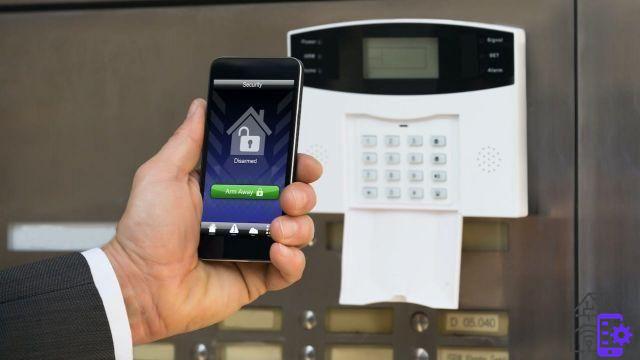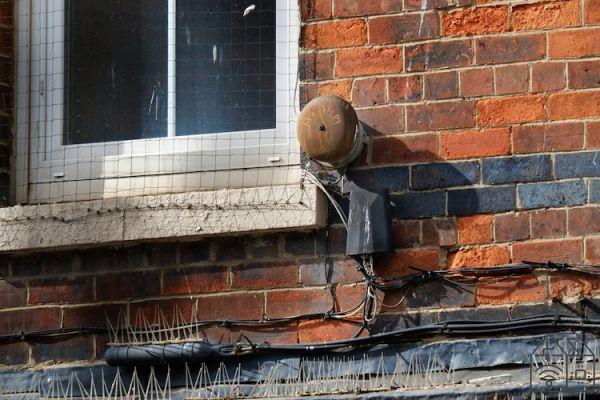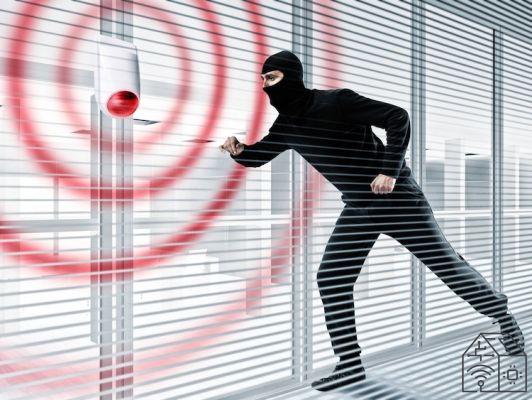
"Property is theft," said the anarchist Pierre-Joseph Proudhon. But whoever owns a property usually tends to hold on to it, whether it's a house, a vehicle or whatever.
And since there are also individuals inclined not to take the concept of private property too seriously, especially if it is the property of others, in order to protect themselves from malicious people, more and more sophisticated anti-theft systems have been devised over the years.
Normally, the word anti-theft and the term alarm system coincide, although it would be more correct to say that the alarm systems are electronic anti-theft. In fact, even a wolf dog guarding a villa is an anti-theft device (usually, however, quite persuasive).
So, before we find out how alarm systems have changed, let's try to define them.

The alarm systems
Alarm systems are electronic systems for the protection of immovable property (but they can also be extended to movable property, such as vehicles). They can have sensors connected with wires, be wired or wireless.
But when did alarm systems come into existence and how did they change?
The birth of alarm systems
In the eighteenth century an English gentleman, whose surname we only know - Tildsley - would have invented a rudimentary anti-intrusion system, mechanically connecting some chains to his own entrance door. In short, a possible attacker would have made the chains move and resound, and aroused attention.
Ma unanimously the history of alarm systems begins in a specific year, indeed: on a specific day. In fact, June 21, 1853 is the date on which Augustus Russell Pope, an inventor from Somerville (a town near Boston), filed a patent. Which patent? Well, an idea that combined Pope's needs (a thief apparently robbed his house) with his virtues as an inventor.
It was about a battery-powered device based on an electrical circuit, to which doors and windows were connected as independent units. Here is how it works: if the door or window were open, the circuit closed, and then the sudden flow of current caused a magnet to vibrate. The electromagnetic vibrations were then transferred to a hammer which hit a brass bell.
The peculiarity of Pope's alarm was that the system could not be shut down by closing the windows or doors. A wall-mounted activation spring kept the electrical circuit open, so the bell kept ringing.
Da Pope a Holmes
To understand how alarm systems have changed, it is necessary to explain how the genius of Augustus Russell Pope joined Edwin Holmes' business acumen.
Holmes in 1857 sensed the potential of Pope's invention and bought the rights. He founded the Holmes Electric Protection Company, the first company for electrical alarm systems, which pioneered the field of electromagnetic alarm technology.
Also thanks to the domestic diffusion of electricity, Holmes advertised the product (initially reserved for wealthy people), which has begun to spread internationally. And above all he introduced the idea, then pioneering, of an intrusion control device in homes.

The first alarm network
To understand how alarm systems have changed, it is necessary to mention another pivotal date: 1867.
In that year Edward Calahan, inventor from Boston, realized the possibility of having an anti-theft system not limited to a single house. He thus created a system powered by the central electricity grid, connected to the telephone lines.
Not only did Calahan therefore invent a widespread alarm system, but he also endowed it with the fundamental possibility of receiving immediate help from the police.
The twentieth century
In 1905 Pope's burglar alarm and Holmes' company are bought by AT&T. A system of emergency calls to the local police and firefighters was connected to the alarm: alarms are beginning to spread on a large scale.
 Do-it-yourself burglar alarms: Armor - Defenses - Burglar tricks ...
Do-it-yourself burglar alarms: Armor - Defenses - Burglar tricks ...
- Poggi, Valerio (Author)
Alarm systems today
Since the XNUMXs, alarm systems have gradually become more sophisticated.
Motion sensors, video surveillance and the use of infrared have been introduced and perfected. And door armor has become more and more secure.
Wireless technology made its appearance in the new millennium. Wireless alarm systems today can be managed remotely by means of a device. Connectable to motion sensors, volumetric sensors and magnetic contact detectors, they contribute to making homes even smarter.


























